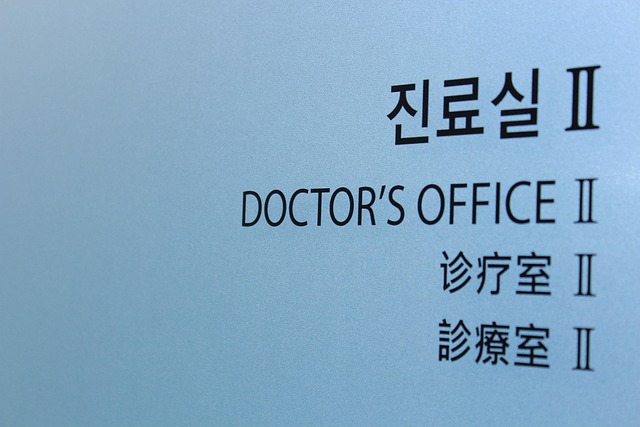Post-traumatic stress disorder (PTSD) is a mental health condition arising from traumatic experiences, characterized by intrusive memories, nightmares, avoidance behaviors, and heightened arousal. Traditional treatments combine medications like SSRIs with psychotherapy, but evidence-based approaches like Cognitive Processing Therapy (CPT) and Eye Movement Desensitisation and Reprocessing (EMDR) are more effective. CPT targets distorted thinking patterns to reduce PTSD symptoms and promote healing by modifying negative beliefs and coping mechanisms. Research shows CPT significantly improves symptom severity and quality of life for individuals with PTSD, making it a leading treatment option integrated with other methods like exposure therapy and mindfulness practices.
“Discover Cognitive Processing Therapy (CPT), a powerful approach transforming PTSD treatment. This comprehensive guide explores the profound impact of PTSD on individuals and society, highlighting the need for effective therapies. We delve into traditional treatments, introducing CPT as a revolutionary solution. Understand how this therapy addresses symptoms, its structured process, and proven benefits. Learn about integration with other therapies and real-life success stories. Access valuable insights on trying CPT, offering hope and healing for PTSD.”
Understanding PTSD and Its Impact

Post-traumatic stress disorder (PTSD) is a mental health condition that can affect individuals after they’ve experienced or witnessed a traumatic event, such as military combat, violence, or a natural disaster. It’s characterized by symptoms like intrusive memories, nightmares, avoidance of trauma-related triggers, negative changes in thoughts and mood, and heightened arousal. These symptoms can significantly impair daily functioning, affecting relationships, work performance, and overall quality of life.
Understanding the impact of PTSD is crucial for effective treatment. Cognitive processing therapy (CPT), a form of PTSD treatment, aims to help individuals challenge and reframe distorted thinking patterns associated with the trauma. By modifying these cognitive processes, CPT facilitates the reduction of symptoms and promotes healing. This approach emphasizes the connection between thoughts, feelings, and behaviors, allowing patients to develop healthier coping strategies for managing traumatic memories and triggers.
Traditional Treatment Approaches for PTSD

Traditional approaches to treating Post-Traumatic Stress Disorder (PTSD) often involve a combination of medications and psychotherapy. Selective serotonin reuptake inhibitors (SSRIs) and other antidepressants are commonly prescribed to manage symptoms such as anxiety, irritability, and insomnia. However, these medications only address the symptoms and do not necessarily address the underlying causes of PTSD.
Psychotherapy plays a pivotal role in PTSD treatment, with various techniques gaining recognition over the years. Cognitive processing therapy (CPT) is one such evidence-based approach that helps individuals process and reframe traumatic memories, thereby reducing their distress and avoidance behaviours. Other forms of therapy like eye movement desensitisation and reprocessing (EMDR) have also shown promising results in helping folks overcome the debilitating effects of PTSD.
Introduction to Cognitive Processing Therapy (CPT)

Cognitive Processing Therapy (CPT) is a highly effective form of PTSD treatment that focuses on helping individuals challenge and change unhelpful thought patterns associated with traumatic experiences. This evidence-based therapy was developed to address the specific cognitive distortions that often accompany post-traumatic stress disorder, aiming to reduce symptoms and promote resilience.
By working collaboratively with a trained therapist, CPT guides patients through a structured process of identifying and modifying negative beliefs and schemas triggered by the trauma. Through various techniques, individuals learn to recognize and challenge these distorted thoughts, gaining a more balanced perspective on their traumatic experience. This therapeutic approach empowers individuals to take control of their mental health and develop healthier coping mechanisms for managing PTSD symptoms.
How CPT Addresses PTSD Symptoms

Cognitive Processing Therapy (CPT) is a highly effective PTSD treatment approach that focuses on modifying unhelpful thought patterns and behaviors associated with traumatic experiences. By helping individuals process and reframe their memories, CPT addresses the core symptoms of PTSD, such as intrusive thoughts, avoidance, negative mood, and heightened arousal.
Through structured sessions, CPT encourages patients to confront and re-evaluate their traumatic memories, challenging the validity of distorted beliefs and promoting healthier coping strategies. This process enables individuals to reduce the impact of PTSD on their daily lives, leading to improved symptom management and enhanced overall well-being.
The Step-by-Step Process of CPT

Cognitive Processing Therapy (CPT) is a structured, goal-oriented approach designed to help individuals process traumatic memories and reduce the symptoms of PTSD. The step-by-step process involves several key phases. Firstly, the therapist helps the client identify and challenge unhelpful beliefs that have developed as a result of the trauma. This involves exploring thoughts and feelings associated with the traumatic event(s) and identifying negative thought patterns.
Next, clients learn to modify these unhelpful beliefs by replacing them with more balanced and realistic ones. This is achieved through various cognitive restructuring techniques. The therapy then progresses to exposure exercises, where clients safely confront their trauma memories in a controlled environment. Over time, this helps desensitize individuals to the traumatic triggers and reduces the emotional distress associated with recalling the event(s). CPT also emphasizes the importance of teaching coping strategies to manage anxiety and stress, ensuring clients have tools to navigate challenging situations effectively.
Benefits and Effectiveness of CPT

Cognitive Processing Therapy (CPT) offers a targeted and effective approach to treating Post-Traumatic Stress Disorder (PTSD). One of its key strengths is its ability to empower individuals by helping them challenge and reframe distressing thoughts and memories associated with traumatic events. Through CPT, patients learn to identify and modify unhelpful cognitive patterns, which in turn reduces the intensity of negative emotions and physical symptoms related to PTSD.
The effectiveness of CPT has been well-documented in numerous studies. Research consistently shows significant improvements in symptom severity, allowing individuals to better manage their daily lives. This form of therapy also fosters resilience by teaching coping strategies that can be applied long after treatment sessions have concluded. As a result, CPT is widely recognized as a leading evidence-based practice for PTSD treatment, offering hope and improved quality of life for those affected by traumatic experiences.
Integrating CPT with Other Therapies

Cognitive Processing Therapy (CPT) is often used as a standalone approach for PTSD treatment, but its true power lies in integration with other therapeutic modalities. Combining CPT with exposure therapy, for instance, can create a comprehensive strategy to address both cognitive and emotional aspects of PTSD. This hybrid method allows therapists to target specific trauma-related thoughts and feelings while also exposing individuals to feared memories or situations in a safe, controlled manner.
Additionally, integrating CPT with mindfulness-based practices or eye movement desensitization and reprocessing (EMDR) can enhance its effectiveness. Such integrations cater to diverse patient needs and preferences, ensuring that the PTSD treatment aligns with individual experiences and goals. This multi-faceted approach has shown promising results in improving symptoms of PTSD, offering a holistic path to recovery.
Real-Life Success Stories: CPT in Action

Many individuals living with Post-Traumatic Stress Disorder (PTSD) have found hope and healing through Cognitive Processing Therapy (CPT). Real-life success stories abound, showcasing the effectiveness of this evidence-based approach. CPT empowers people to confront and process traumatic memories, helping them gain a fresh perspective and reduce the intense emotions associated with PTSD.
Through various techniques, CPT allows individuals to challenge and reframe negative thoughts and beliefs that have developed as a result of trauma. This process facilitates a shift in their cognitive and emotional responses, leading to improved symptoms and enhanced quality of life. These success stories serve as powerful testimonials to the transformative potential of CPT in the PTSD treatment landscape.
Accessing CPT for PTSD Treatment

Cognitive Processing Therapy (CPT) is a well-established and effective approach for Post-Traumatic Stress Disorder (PTSD) treatment. This evidence-based therapy empowers individuals to confront and process traumatic memories, helping them gain control over symptoms that may have been debilitating. CPT involves working with a trained therapist to identify and challenge negative thoughts and beliefs associated with the trauma, fostering healthier cognitive patterns.
Accessing CPT for PTSD treatment is an important step towards healing. Many mental health professionals are equipped to deliver this therapy, making it increasingly available. Often, insurance plans cover PTSD treatments like CPT, making it more accessible for those in need. Individuals seeking help can consult their insurance providers or local healthcare networks to find qualified therapists offering this specialized service.
